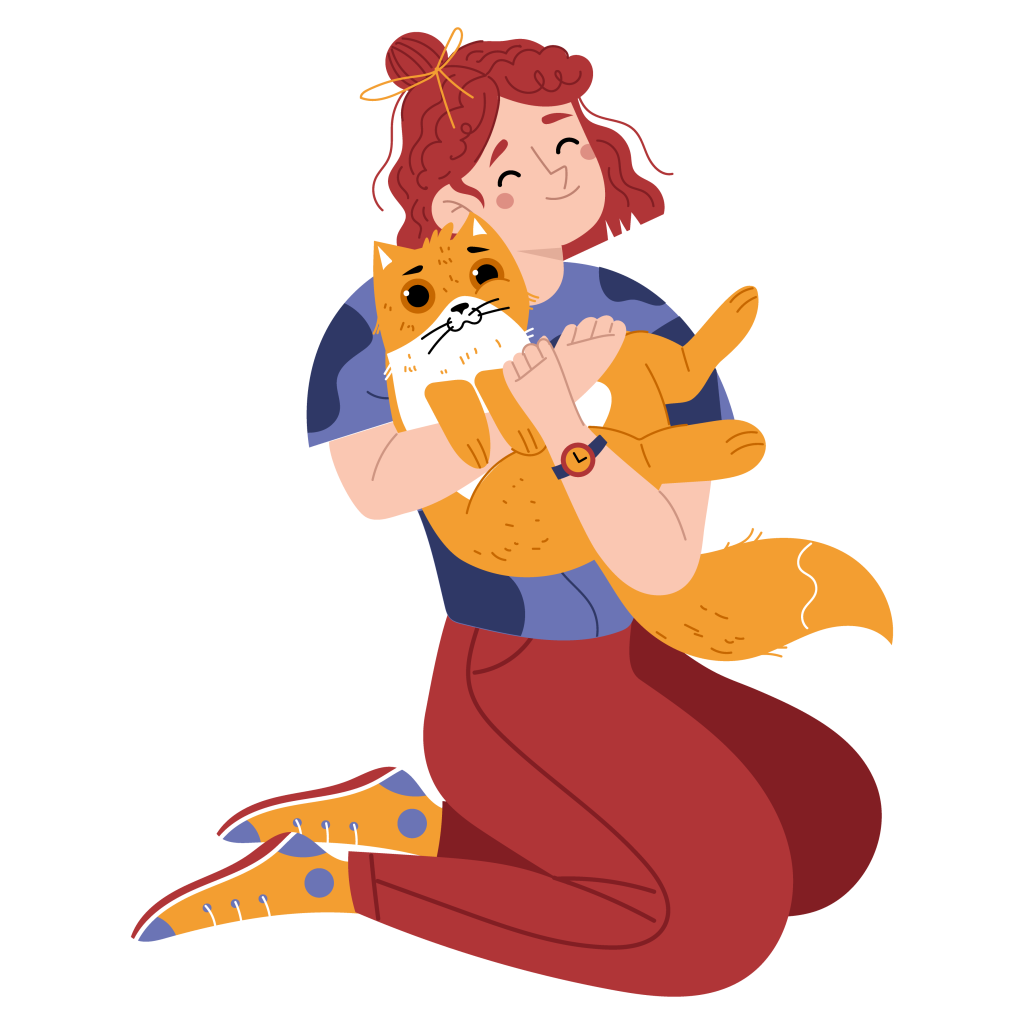Pets and Their People Blog
Positive Reinforcement vs. Punishment: The Best Approach to Cat Training
This blog post is the Runner-up in the Pet Professional Guild’s Pets and Their People Celebrating Life Together community outreach competition in the Pet Professional Activities- Write a Blog Post category.
When we think about correcting unwanted cat behavior, the first thing that often comes to mind is the outdated method of using a spray bottle. This approach, though common, is actually an example of positive punishment. In simple terms, positive punishment means adding an unpleasant stimulus—like a spray of water—to discourage a behavior.
However, using punishment, in general, is not the answer to training your cat to develop the correct behaviors. While positive punishment might seem to work in the short term, it can lead to long-term consequences that are far from desirable.
The Consequences of Positive Punishment
- Cats quickly learn that the unpleasant stimulus only occurs when the owner is around, so the unwanted behavior continues when the owner isn’t present. This means that your cat may only seem well-behaved when you’re watching, but revert to the unwanted behavior when you’re not around.
- Cats can associate the punishment with their owner, leading them to become fearful or anxious around you. This can ruin the bond between you and your cat, making your feline friend more distant and less trusting.
- Punishment can cause your cat to feel stressed and anxious, which can lead to more serious behavioral issues or even health problems. Anxiety in cats can manifest in a variety of ways, from excessive grooming to destructive behavior, or even aggression.
Why Positive Reinforcement Works Better
Instead of focusing on punishment, positive reinforcement should be used to reward your cat when they display desirable behavior. This method builds trust between you and your cat and allows you to communicate in a way your cat understands. Moreover, your cat will be more willing to repeat the behavior if they know a reward is coming.
Whether you’re teaching fun tricks or encouraging an alternative behavior, it’s important to be patient. Some cats will learn quickly, especially with high-value rewards like treats or toys, but others may need more time. Here’s how to approach training with positive reinforcement:
- Create a distraction-free environment– Train in a quiet space with minimal distractions. Cats have short attention spans, so it’s best to keep training sessions short, starting with just a minute or two and gradually increasing the time as your cat stays engaged. Most cats do well with sessions lasting up to five minutes, but each cat is different, so pay attention to their signals.
- Start with simple tasks– Begin with easy tasks to prevent your cat from becoming frustrated. For example, a simple nose target—where your cat touches their nose to your finger or a target—is a great place to start. This basic behavior can be built upon as your cat gets more comfortable with training.
Before adding more steps or increasing the complexity of a behavior, ensure your cat understands and performs the desired behavior at least 80% of the time. This helps prevent confusion and frustration.
- The importance of predictability– Predictability may not be the first thing that comes to mind when considering training, but it’s crucial for cats. Cats thrive on routine and schedules, which help them feel secure and safe in their environment. Incorporating training sessions into your cat’s daily routine provides them with a sense of security and gives them something reliable to depend on.
- Positive interruption techniques– When your cat engages in unwanted behavior, it’s helpful to have a positive way to interrupt them. Instead of using methods that may seem threatening, like squirt bottles or shouting, train your cat to go to a specific spot when asked, or teach them to come to you when called. You could also throw a toy to divert their attention or start an interactive play session.
- Preventing unwanted behavior– The best way to prevent unwanted behavior is to ensure your cat’s physical and mental needs are met. As their caretaker, provide opportunities for your cat to burn off energy and engage their mind. Offer activities that allow your cat to play, climb, run, and jump, along with puzzles and varied stimuli to keep them occupied and prevent boredom.
By embracing positive reinforcement and understanding your cat’s needs, you can foster a strong, trusting relationship with your feline friend and enjoy the many rewards of a well-behaved, happy cat.
About the Author

Mary Stevens is a new cat behavior consultant with nearly two decades of experience as a veterinary technician. In 2022, Mary received her cat training certificate from Animal Behavior College. Since January 2023, she has been under the mentorship of Laura Cassiday at Pawsitive Vibes Cat Behavior and Training. In the past year, she has become a Certified Cat Friendly Professional, a certified Fear Free Professional, and has started her own consultations for minor behavioral problems for Pawsitive Vibes Cat Behavior and Training. Mary’s extensive experience in veterinary medicine, combined with her specialized training in feline behavior, brings a unique and valuable perspective to her consultations.
You can find her cat behavior services, Minis with Mary, at www.pawsitivevibescats.com.
About Celebrating Life Together – PPG’s Advocacy Event Raising Awareness for Humane, Ethical, and Effective Pet Training and Care

Part 1 – Community Outreach Competition
- A Community Outreach Event where participants developed educational messages, videos, infographics, and blogs to circulate on their social media and in their local communities.
- An event designed to provide great examples of positive reinforcement training and pet care procedures that all pet guardians can embrace.
Part 2 – Virtual Education Event NOW A RECORDED PACKAGE
- A total of 67 hours of education!
- Registrants get access to the session recordings for one year.
- CEUs are available.

